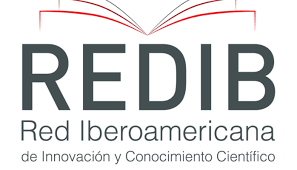Submissions
Submission Preparation Checklist
As part of the submission process, authors are required to check off their submission's compliance with all of the following items, and submissions may be returned to authors that do not adhere to these guidelines.- The submission has not been previously published or submitted for consideration by any other journal (or an explanation has been provided in the Comments to the editor/a).
- Whenever possible, the DOI shall be provided for bibliographical references.
- The writing style, the titles, the references in the text and the list of references at the end of the manuscript follow the APA regulation in its 7th edition. I have also checked that the use of capital letters in references is correct.
- The text has double spacing; 11 font size dots and 10 footnotes.
- When creating my user OJS I have uploaded my institutional affiliation as well as the information of the other co-authors. I have included the ORCID for co-authors.
- I’ve deleted the authors' names from the manuscript to preserve the blind evaluation process.
- Papers must be presented in a text file . doc or .odt.
- In cases where graphics, tables, images, photos, maps, or any additional material have been inserted into the text, the author must attach them separately. That is, if they are tables and charts, you should send the Excel data. If they are images, such as photos, maps, etc. these should be sent as JPG, PNG or similar file.
- With regard to the right to use images the author must have the permissions to reproduce it and/or be duly cited and referenced.
Articles
Se trata de trabajos destinados a mostrar resultados empíricos o teóricos novedosos resultantes de investigaciones en curso o recientemente finalizadas en el campo temático. El trabajo deberá incluir:
- Introducción: en la introducción se debe resaltar la importancia y centralidad del tema, reseñar de manera global las principales investigaciones anteriores mediante referencias de expansión, formular los objetivos del texto y explicar la estructura del documento.
- Metodología: presenta en detalle las etapas lógicas del diseño investigativo indicando los recursos, técnicas y procedimientos que se requirieron para llegar a los resultados investigativos. El tiempo verbal implementado es el pretérito.
- Resultados: esta sección resume los datos recolectados más relevantes y el tipo de análisis realizado.
- Conclusiones: apartado donde se interpretan los resultados e implicaciones de la investigación o de la reflexión propuesta sin incluir nuevas referencias bibliográficas. Se proyectan posibles aplicaciones, recomendaciones y sugerencias.
- Referencias bibliográficas: deben incluir solo las citadas en el texto del artículo. Las referencias bibliográficas deberán citarse luego de las conclusiones adoptando las normas APA (7ma edición).
Essays
Esta sección está destinada a la publicación de ensayos académicos que pueden o no ser resultado de investigaciones empíricas, pero que, por las características de su escritura, argumentación, intención y comunicabilidad, merecen esta denominación. El ensayo es una discusión argumentativa en la cual el escritor expone un tema de interés disciplinar acercándose a la realidad de los hechos y a su conocimiento de ellos. Las referencias bibliográficas deberán citarse utilizando las normas APA (7MA EDICIÓN).
Short communications
Se trata de estudios descriptivos o retrospectivos, para dar a conocer resultados preliminares de un proyecto (de grado, posgrado, becas, proyectos de investigación, etc.) o estudios de caso, donde se describe y analiza los resultados de uno o varios casos sobre cómo se desarrollaron eventos de interés. El trabajo deberá incluir:
- Introducción: se debe señalar las características del proyecto (de grado, posgrado, investigación, beca) o estudio de caso y grado de avance o finalización alcanzado, una breve presentación de la metodología utilizada y la referencia a las líneas de investigación seguidas.
- Exposición del caso, con cuidado de las debidas normas éticas que rigen las investigaciones en las que participan personas humanas.
- Discusión: la reflexión propuesta sin incluir nuevas referencias bibliográficas. Se proyectan posibles aplicaciones, recomendaciones y sugerencias de nuevas líneas de investigaciones/trabajo
- Referencias bibliográficas: deben incluir solo las citadas en el texto del artículo. Las referencias bibliográficas deberán citarse luego de las conclusiones adoptando las normas APA (7MA EDICIÓN).
Reviews/ Critiques
Reseñas / críticas: En esta sección se podrán incluir reseñas o críticas de libros, revistas, tesis, etc. La reseña "es un escrito breve que intenta dar una visión panorámica y crítica de alguna obra”. Serán a solicitud del Comité Editorial.
Copyright Notice
Those authors who have publications with this journal, agree with the following terms:
a. Authors will retain its copyright and will ensure the rights of first publication of its work to the journal, which will be at the same time subject to the Creative Commons Atribución-NoComercial-SinDerivadas 4.0 Internacional (CC BY-NC-ND 4.0) allowing third parties to share the work as long as the author and the first publication on this journal is indicated.
b. Authors may elect other non-exclusive license agreements of the distribution of the published work (for example: locate it on an institutional telematics file or publish it on an monographic volume) as long as the first publication on this journal is indicated,
c. Authors are allowed and suggested to disseminate its work through the internet (for example: in institutional telematics files or in their website) before and during the submission process, which could produce interesting exchanges and increase the references of the published work. (see The effect of open Access)
Privacy Statement
The names and email addresses entered in this magazine will be used exclusively for the purposes stated in it and will not be provided to third parties or for use for other purposes.
























